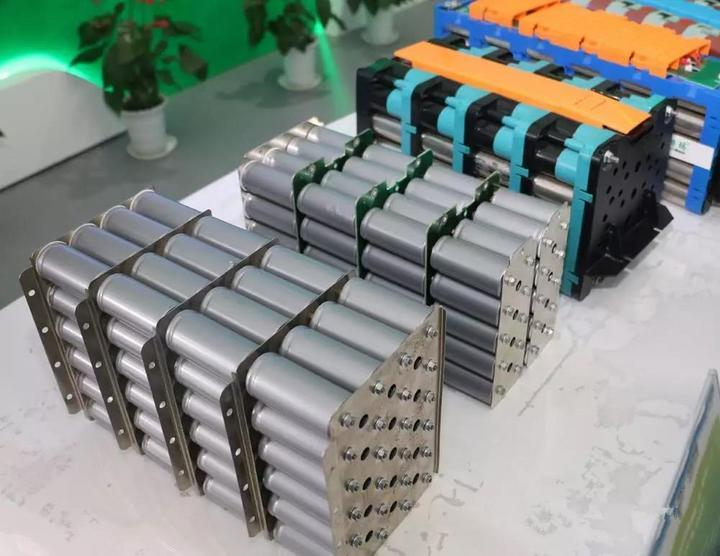Introduction: Many people only know that CATL is the world’s largest supplier of power batteries (for four consecutive years), but do not know that it is also the world’s largest supplier of lithium iron phosphate batteries.
According to data released by the China Automotive Power Battery Industry Innovation Alliance, from January to May, China’s lithium iron phosphate battery production reached 29.9 GWh, accounting for 50.3% of the total production. This means that as of this year, the production of lithium iron phosphate batteries has surpassed that of ternary lithium batteries.
Industry insiders interpret this change as a “signal” that the lithium iron phosphate battery king is returning. Is this a so-called “signal” or is it worth discussing?
Although ternary lithium became the mainstream battery technology for China’s new energy market in 2018, there has not been an absolute one-sided trend in the competition between the two in recent years.
For example, in the recent months of January and February 2020, the proportion of lithium iron phosphate batteries in the total production of power batteries reached 51.6%, surpassing ternary lithium batteries. Looking at the entire year of 2020, the total production of power batteries was 83.4 GWh, with ternary batteries accounting for 48.5 GWh, or 58.1% of the total production, higher than that of lithium iron phosphate.
It can be seen that although the production of lithium iron phosphate batteries surpassed that of ternary lithium batteries in the early part of last year, ternary lithium batteries still took the crown for the whole year, becoming the king of China’s power batteries.
Therefore, although the production of lithium iron phosphate batteries from January to May this year has surpassed that of ternary lithium batteries (by only 0.6 percentage points), it is still uncertain whether the former will surpass the latter in cumulative production this year. At least in the past three years (2018-2020), ternary lithium has been the final winner.
In fact, compared with production, data on terminal installation can better reflect the current situation of the new energy market. Data shows that in the first five months of this year, the cumulative installed capacity of lithium iron phosphate batteries was 17.1 GWh, accounting for only 41.3% of the total installed capacity, while the installed capacity of ternary lithium batteries was as high as 58%.
Therefore, it is still too early to say that the lithium iron phosphate battery king is returning, and there is a suspicion of confusion with certain concepts. At least in the data that most accurately reflects the new energy vehicle market, the proportion of lithium iron phosphate batteries is still less than 50%.
Some people are puzzled as to why the proportion of lithium iron phosphate battery production in the first five months of this year was 50.3%, while the proportion of installed capacity was only 41.3%. In fact, in addition to being used in vehicle power systems, lithium iron phosphate batteries are also used in energy storage systems and even some two-wheeled vehicle markets. This is one of the reasons why lithium iron phosphate batteries have always been favored by major battery companies.
Returning to the topic above, although ternary lithium is still the most mainstream technology route in the new energy vehicle market, the recent rise in raw material prices and further improvements in lithium iron phosphate batteries have released their cost advantages, which is an important factor in the latter’s return to favor.When it comes to the new energy vehicle market, after the unprecedented success of Tesla Model 3 equipped with CATL’s lithium iron phosphate battery, XPeng and NIO are also eager to try the lithium iron phosphate battery. Judging from the record-breaking net increase in sales of P7 equipped with lithium iron phosphate in May, it plays a crucial role. Encouraged by the success of Model 3, it is rumored that Model Y will also adopt the lithium iron phosphate battery from CATL in July.
So although ternary lithium is still the mainstream power battery technology for new energy vehicles, the penetration of lithium iron phosphate batteries in the market should also be taken seriously. Especially in the subtle changes of the industry where the charging conditions are becoming more convenient, and consumers do not require too high a demand for cruising range, lithium iron phosphate batteries have more room for development.
So in the recovery of the lithium iron phosphate battery market in the new energy industry, who benefits the most? Of course, it’s the king of lithium iron phosphate batteries, and it’s not hard to guess who the king is. Whether it’s Tesla Model 3/Model Y, or popular new energy brands and products such as NIO, XPeng, and Euler, their lithium iron phosphate suppliers all feature the name of CATL.
Since Japanese and Korean battery companies mainly focus on ternary lithium, lithium iron phosphate battery players mainly concentrate on Chinese battery brands, including CATL, BYD, and Guoxuan High-Tech, among which CATL is undoubtedly the king.
Data shows that in 2020, the installed capacity of lithium iron phosphate power batteries was 23.2GWh, among which CATL dominated with an absolute advantage of 13.68GWh and a market share of 58.9%, winning the championship in the installed capacity of lithium iron phosphate batteries.
Although CATL is the king of lithium iron phosphate batteries, that is not all it has to offer. It also has ternary lithium batteries, sodium batteries, solid-state batteries, and more. That’s right. For a brand that has won the global power battery championship for four consecutive years, it delivers what the market demands and does it best. That’s the bottom line of a champion.
This article is a translation by ChatGPT of a Chinese report from 42HOW. If you have any questions about it, please email bd@42how.com.
